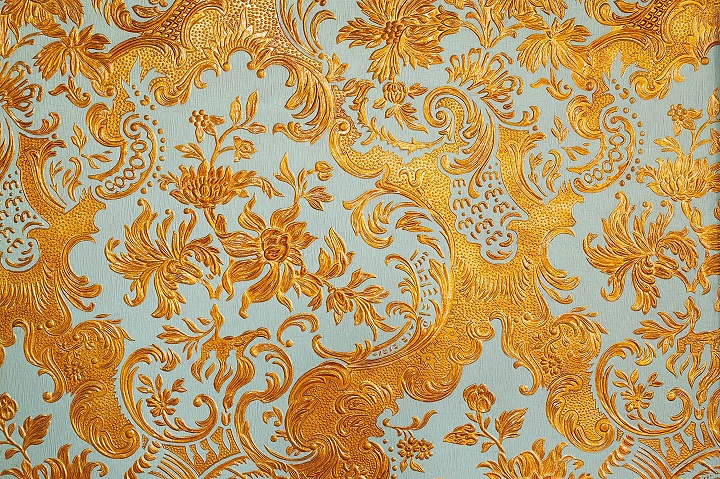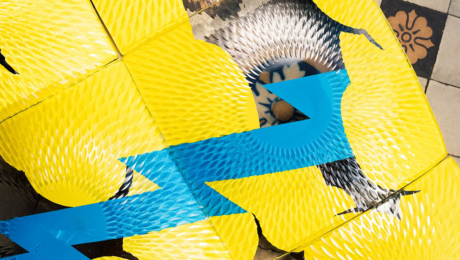

Kinkarakami Institute
2022.03.24
LIFE
Kinkarakami originated in European gilt leather. Upon being brought over to Japan, artisans recreated the decorative leather using Japanese paper.
During and after the Meiji period, Kinkarakami became popular enough to even be exported. However, the ascent of its popularity began to slow after its initial peak. By the middle of the Showa period, the production techniques had become almost completely lost.

The work of restoring this lost technique was started by Takashi Ueda, who founded the Kinkarakami Institute and is holder of the national selected traditional conservation technique of Kinkarakami.
Ueda has been involved with restoration work of various Important Cultural Properties, including the Kyu-Iwasaki-tei Gardens and building that housed the Otaru branch of the Former Nippon Yusen company. He is also involved with creating products such as folding screens that use Kinkarakami.

The Kinkarakami Institute has taken part in this exhibition through a special collaboration, recreating the wallpaper used on the second floor guest room of the Kyu-Iwasaki-tei garden’s Western-style building. This recreated Kinkarakami was then used by contemporary artist Noritaka Tatehana to create special Heel-less Shoes.
The upper part of the piece has Tatehana’s classic embossed leather, while the lower half uses the Kinkarakami paper.


This piece contrasts the expression of embossed leather representing the gilt leather brought over from Europe, and expression of Kinkarakami that uses Japanese paper. Within this contrast one can feel the deep history that connects gilt leather and Kinkarakami.

Wallpaper of the Kyu-Iwasaki-tei Gardens
This Kinkarakami wallpaper decorated the walls of a guest room on the second floor of the Western-style building. It was re-created in 2003 by Takashi Ueda. Similar wallpaper was used in the Rokumeikan, which was also designed by Josiah Conder.

Pounding brushes
These brushes are used for stamping. Stencil paper with foil is placed on the woodblock roller. The pattern is then copied onto fabric by stamping it with the brushes.

Brushes
As the multilayered paper is prepared, paste is applied, followed by varnish. These brushes are used to apply color after varnishing. Quite a large number of brushes are used when making Kinkarakami wallpaper.

Woodblock cylinder
This was used in the re-creation of Kinkarakami wallpaper during repair work on the Western-style building of the Kyu-Iwasaki-tei Gardens in 2003.

Pastoral scenery
This work was created using woodblock rollers that have survived. It features birds with outspread wings in addition to flowers and fruit such as grapes, pomegranates, and pears.

Kinkarakami Institute
A research institute focused on the restoration of Kinkarakami. Kinkarakami’s origins lie in the decorative European gilt leather, which was reproduced using Japanese paper after being imported into the country. They have been involved with restoration work on Important Cultural Properties including the Kyu-Iwasaki-tei Garden and building that housed the Otaru branch of the Former Nippon Yusen company.
Photo by GION

NEXT: Iwasaki Family’s Seasonal Festival Dolls
https://en.edotokyokirari.jp/exhibition/life/edotokyorethink2022-festival-dolls/





